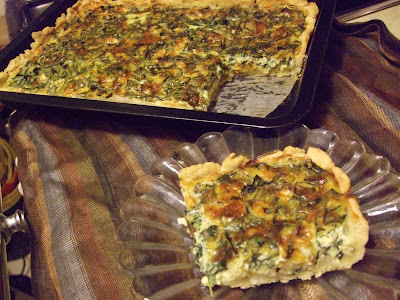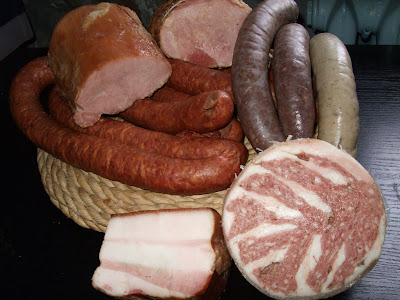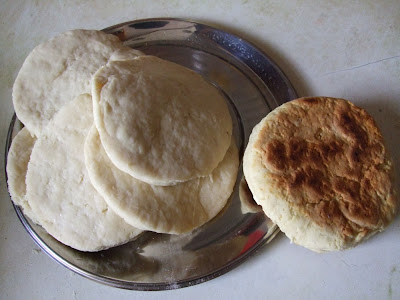Belarusian: Хaлaднiк
Russian: Холодник
Ukrainian: Холодник
Lithuanian: Šaltibarščiai
Chłodnik means cold summer soup. It is eaten not only in Poland but also in other east-European countries. The most popular variant is made with beets and/or young beet leaves, kefir or soured milk and many differrent young fresh raw vegetables and vegetable greens. There are also non-beet variants, sour: with sorrel, tomato, kohlrabi or cucumber, and several fruit ones: especially with currants, strawberries (or wild strawberries), melon or cherry soup. And countless new creative versions. As a child, when my mum was pregnant with my brother, we had to eat meals at a dairy bar and we were eating chłodnik and crepes with curd cheese filling. My homemade chłodnik tastes much better :) The one made with beet leaves is called botwina. If you don't have baby beet fresh leaves, hopefully you could see, to inspire yourself, my attempts of making chłodnik when I was abroad and far away from beet leaves :)
for 3 portions:
2 bunches young beet leaves (each bunch contains 3-4 tiny beets)
2 medium beets
2 bunches radishes
1 bunch chives
1 bunch dill
1/2 lemon
3 cups kefir
1 cup yoghurt
3 eggs

1. Boil eggs for 10 minutes.
2. Cut beet leaves and stalks very finely. Peel tiny beets (those from leaves) and normal beets. Cut those bigger into fourths. Cook them in few (1 cup) water (some people take vegetable broth) until beets are soft. When ready, add freshly squeezed lemon juice.
3. Chop very finely other vegetables: chives, dill and radishes. Pour kefir and yoghurt into the bowl and add chopped vegetables.
4. Using a vegetable grater, grate cooked beets. Add beets, beet leaves and the water in which they were cooked, to the kefir.
5. Season with salt, pepper, lemon juice or apple vinegar and maybe also with garlic. Serve with egg halves (and probably some chopped parsley green)

and here comes another recipe, less popular but also tasty: sorrel chłodnik with whey(chłodnik szczawiowy na serwatce)
250 gr sorrel leaves
3 cups whey (see here how to make whey)
1 cup sour cream
3 tablespoons flour
3 eggs
1 tablespoon butter
dill
1. Bring whey to boil. Whisk cream (of room temperature; not taken directly from the fridge!) with flour until there are no clumps and add to warm whey. Stir and let boil again. Set aside.
2. Chop sorrel finely and stew it with butter and probably very few water for about 10 minutes. Set aside.
3. Add sorrel to cooled whey, salt to taste and sprinkle with dill. Serve with potatoes (serve warm boiled potato chunks on a separate plate or pour cold soup over warm potatoes in a bowl). You can also add boiled egg halves.






































